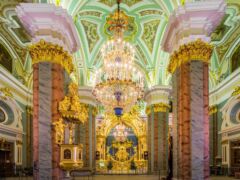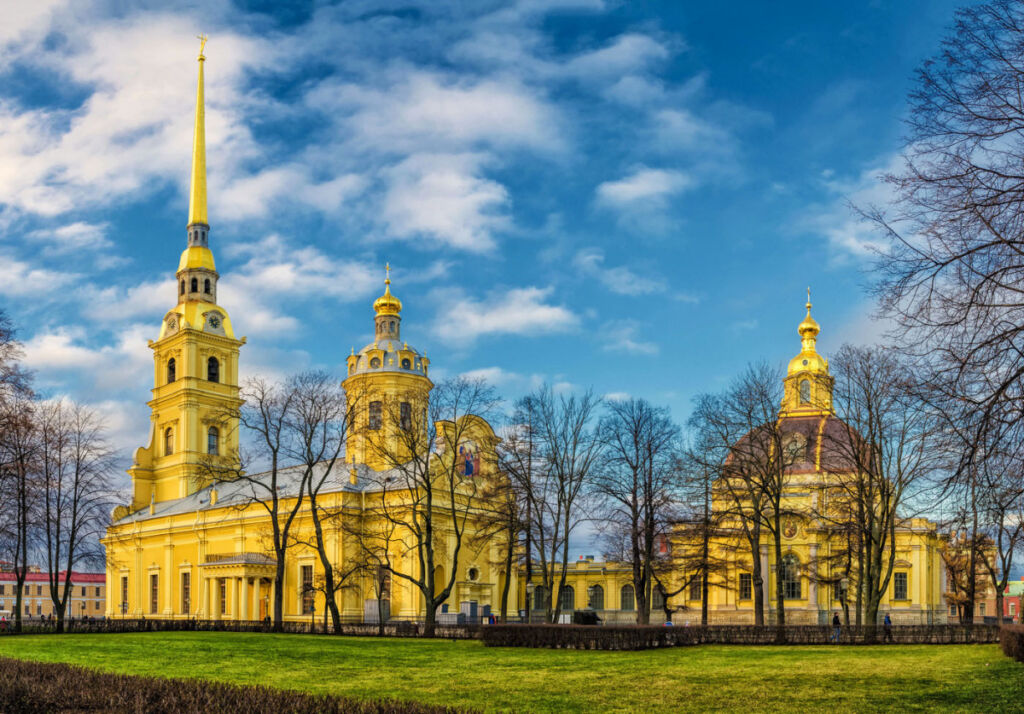Страна:
Регион:
Другие названия:
Значение:
Время визита:
Почему Топ:
Главный собор крепости с высоким шпилем стал усыпальницей русских императоров.
Описание:
Orthodox church in the Peter and Paul Fortress in St. Petersburg, the burial vault of the Russian emperors, a monument of Petrine Baroque architecture.
The stone cathedral was built according to the design of the architect D. Trezzini in 1712–1733 on the site of the first church in St. Petersburg — the wooden Peter and Paul Church, erected in 1703. From 1733 to 2012, the cathedral, 122.5 m high, was the tallest building in St. Petersburg, and until 1952, the tallest in Russia.
In the 18th century, the Peter and Paul Cathedral acquired significance as a memorial to Russian military glory: numerous trophies were kept here: banners, keys to conquered cities and fortresses. Since 1708, burials of members of the Romanov dynasty began in the Peter and Paul Cathedral. During the 18th to early 20th centuries, all emperors and empresses, with the exception of Peter II and Ivan VI, as well as many members of the Imperial House of Romanov, were buried in the cathedral.
In 1918, services in the church ceased, and church valuables were confiscated. In 1922, the cathedral became a branch of the Museum of the Revolution. It is currently under the jurisdiction of the State Museum of the History of St. Petersburg.
Категории:
Метки:
Зачем посещать:
Интерес:
Физподготовка:
Лучшее время:
Доступ:
Roads:
Emergency:
112
Info:
Safety:
Safely
Clothing:
Seasonable
Connection:
Ok









